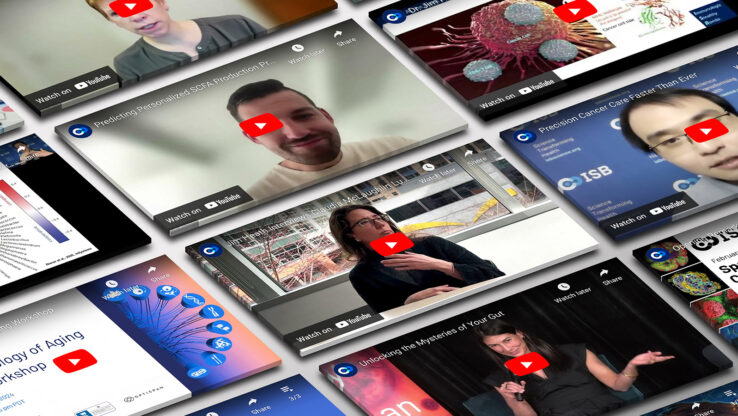ISB Researchers Discover How Microorganisms Evolve Cooperative Behaviors
 isbscience.org/news/2021/03/03/how-microorganisms-evolve-cooperative-behaviors/
isbscience.org/news/2021/03/03/how-microorganisms-evolve-cooperative-behaviors/
Pictured: ISB Director, Senior Vice President and Professor Dr. Nitin Baliga, left, and ISB Senior Research Scientist Dr. Serdar Turkarslan.
Interspecies interactions are the foundation of ecosystems, from soil to ocean to human gut. Among the many different types of interactions, syntrophy is a particularly important and mutually beneficial interspecies interaction where one partner provides a chemical or nutrient that is consumed by the other in exchange for a reward.
Syntrophy plays an essential role in global carbon cycles by mediating the conversion of organic matter to methane, which is about 30 times more potent than carbon dioxide as a greenhouse gas and is a source of sustainable energy. And in the human gut, trillions of microbial cells also interact with each other and other species to modulate the physiology of their human host.
Therefore, deciphering the nature, evolution, and mechanism of syntrophic interspecies interactions is fundamental to understand and manipulate microbial processes, bioenergy production and environmental sustainability.
However, our understanding of what drives these interactions, how they evolve and how their disruption may lead to disease or ecosystem instability, is not well understood.
ISB researchers and collaborators aimed to tackle these fundamental questions to shed light on how interspecies interactions – specifically, cooperation – arise, evolve and are maintained. Their results provide a new window to understand the key roles of these interactions in industrial applications, and in the health and disease of humans, animals and plants.
The study builds on the prior work on syntrophic interactions among two microbes – Desulfovibrio vulgaris (Dv) and Methanococcus maripaludis (Mm) – that coexist in diverse environments (gut, soil, etc.) and play a central role in an important step in biogeochemical carbon cycling.
With a multidisciplinary approach cutting across systems biology, microbiology, evolutionary biology and other disciplines, researchers analyzed massive amounts of genome sequence data generated from more than 400 samples. They investigated the temporal and combinatorial patterns in which mutations accumulated in both organisms over 1,000 generations, mapped lineages through high resolution single cell sequencing, and characterized the fitness and cooperativity of pairings of their individual isolates.
The team uncovered striking evidence that mutations accumulated during evolution generate positive genetic interactions among rare individuals of a microbial community. These genetic interactions increase cooperativity within these rare microbial assemblages, enabling their persistence at very low frequency within a larger productive population. In addition, researchers discovered one of the first examples of parallel evolution, i.e., accumulation of mutations in similar genes across independently evolving populations, underlying the evolution of both organisms in a mutualistic community.
“This study is a significant step in understanding and manipulating early adaptive events in evolution of mutualistic interactions with a wide range of applications for biotechnology, medicine and environment,” said Dr. Serdar Turkarslan, senior research scientist in ISB’s Baliga Lab and lead author of a paper recently published in The ISME Journal.
These discoveries are of great interest because they explain how diverse microbial populations co-exist in dynamically changing environments, such as in reactors, lake sediments and the human gut. Moreover, the study incorporates multiscale systems analysis of diverse kinds of longitudinal datasets and experimental testing of hypotheses to characterize a complex phenomenon that emerges from interactions at the genetic level between two members of a microbial community.
“The methodologies, insights and resources generated by this study will have wide applicability to the study of other interspecies interactions and evolutionary phenomena,” said ISB Professor, Director and Senior Vice President Dr. Nitin Baliga, a co-corresponding author of the paper. “One of the fundamental questions of biology is whether we can predict and modulate interspecies interactions such as the ones between the pathogens and their host environment. If we understand what are the genes that drive interaction of pathogens with the host, we can design therapies to alter the host microenvironment and permissibility of infection, or by directly changing pathogen recognition. For industrial applications, we can quickly screen for the most cooperative mutations across different microbial consortia to facilitate production of public goods.”





